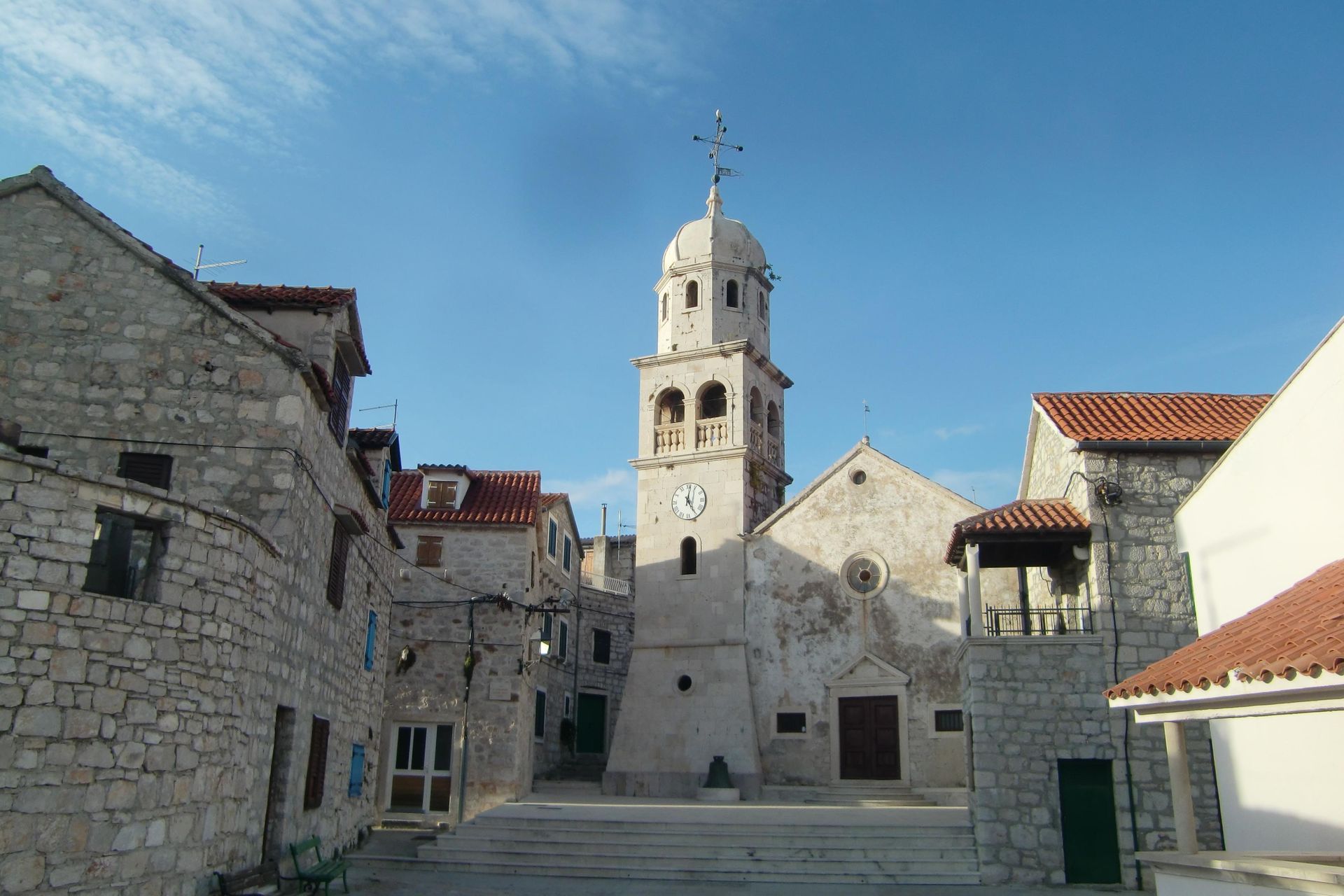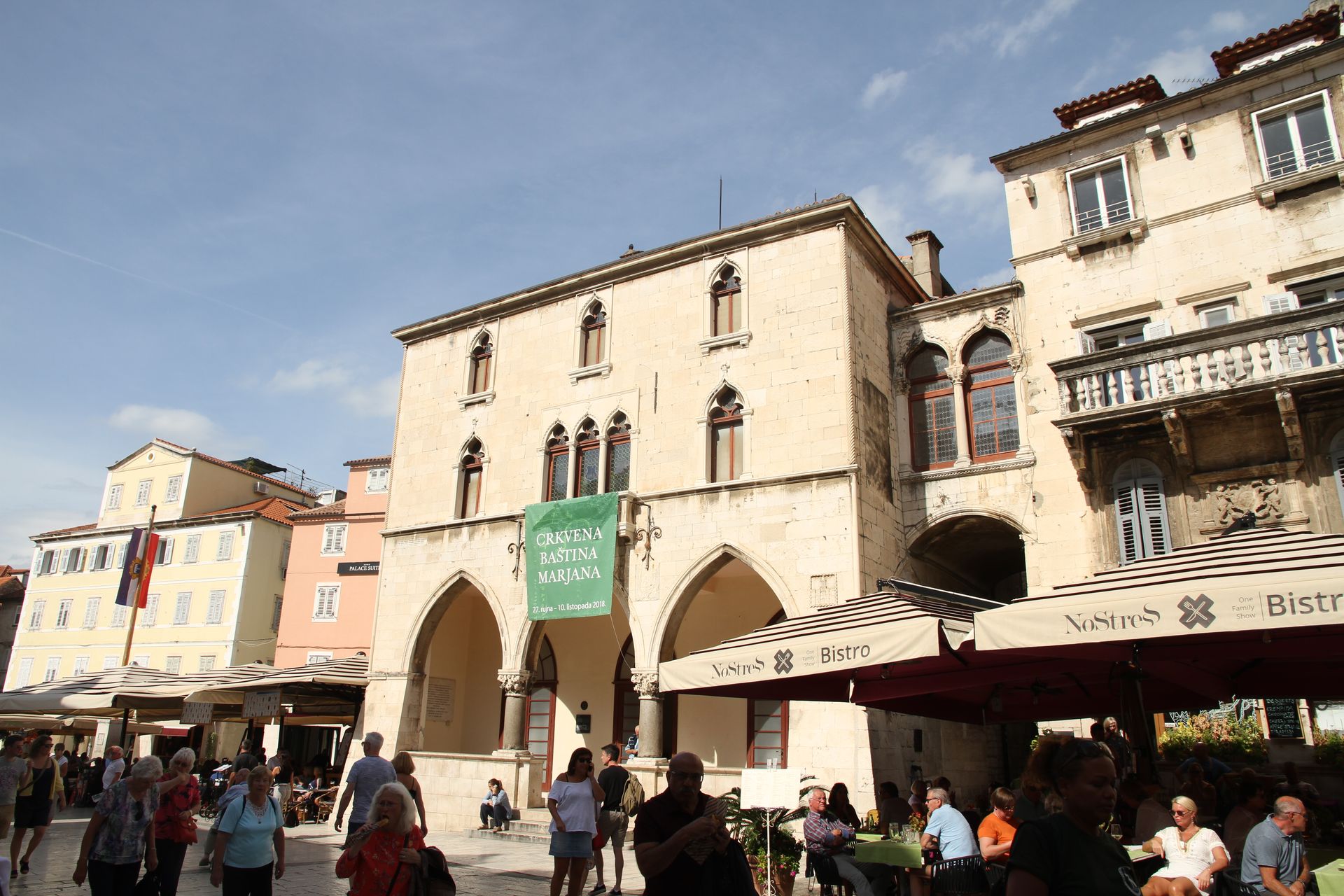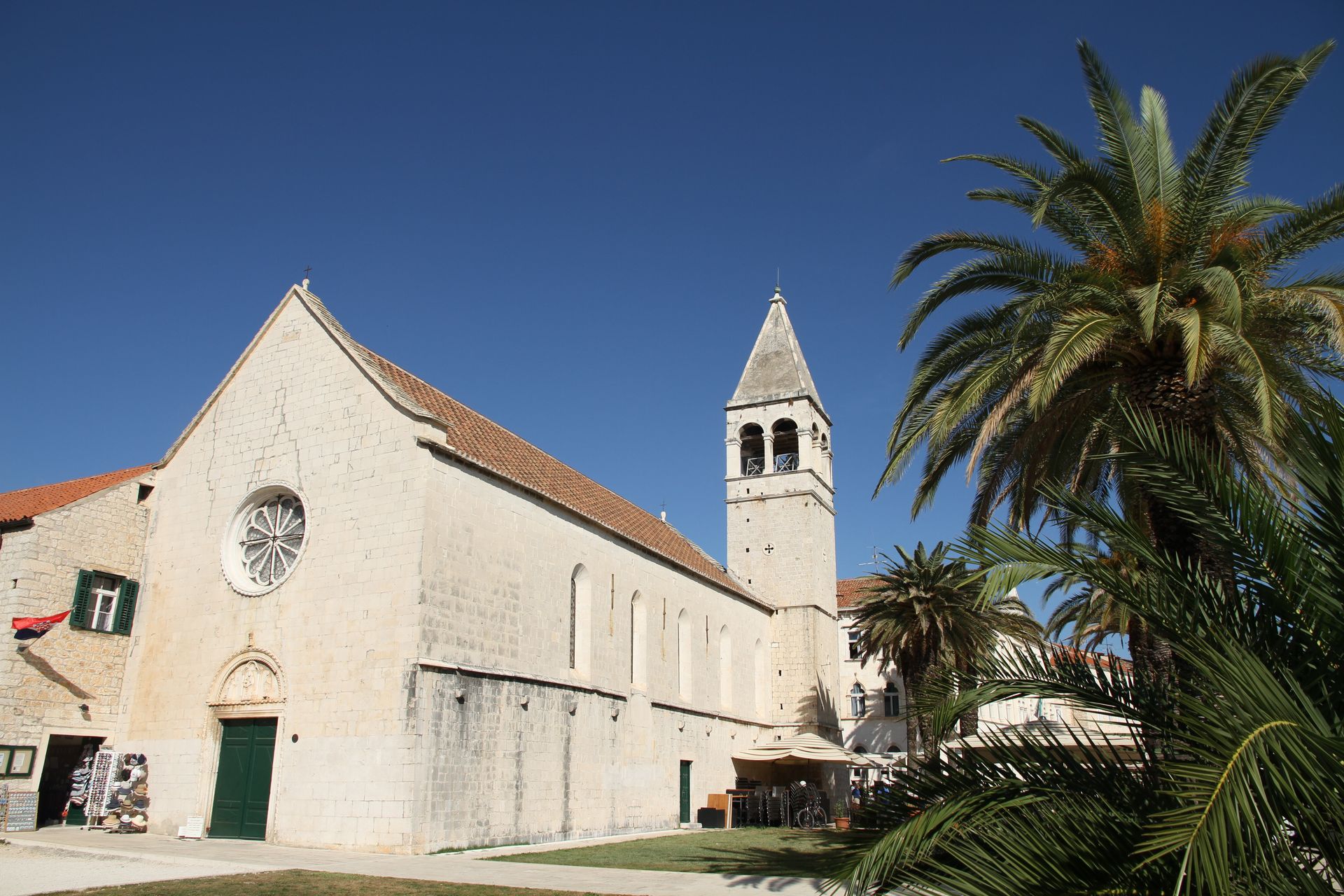The area gets its name from the Delmater, who lived in the area between the Krka and Cetina rivers during the middle of the first pre-Christian century. In the old Illyrian language, “delm” or “dalm” means shepherd, which refers to the main occupation of these people. The Delmater heavily resisted the Roman invaders, so their bravery was honoured by making their name a synonym for all the Illyrian tribes living on the coast, a nomenclature that exists to this day.

The Roman Influence
The story of Dalmatia is fragmented and often contains many transitional sections. Therefore its story can only be told in a simplified way, by focusing on the narratives that are embodied in certain landmarks. For the Romans, the Mediterranean Sea was the Mare Nostrum, the genuine territory of their empire. As conquerors, they weren’t really destroyers as much as they were creators of an imperial structure which manifested itself in their cities, forts, and their functioning street networks. The provincial capital at that time was the cosmopolitan Salona, now an expansive field of ruins, which had an Illyrian Forum Romanum and an amphitheatre and is now located in Solin, close to Split. There, the Emperor Diokletian, who ruled from 284 to 305, built a palace that was 215 by 180 metres large. The palace wasn’t a second government seat but a domicile for life after death, similar to a mausoleum. Diokletian was one of the more famous emperors, having ruled for over 20 years, and his fame was in part due to the consistent and expansive persecution of Christians. Most martyrs now worshipped by the Catholic Church died painfully under his reign.

Christianity rises
After the Edict of Milan in 313 under Emperor Constantin I, Christianity began spreading quite quickly through Illyria and into the imperial palace, where what was once a mausoleum became one of the earliest cathedrals of that region. Apart from Salona and Split, the Forum from Zadar, which still retains its original layout, gives a glimpse of Roman city planning. Parts of the foundation and some columns are still standing, but they are a stage for the opulent scenery, which consists of the round church St. Donatus and the cathedral of St. Anastasia.

After the collapse of the Roman Empire, there were a number of successive ruling systems: In the 5th century there were the Byzantines, the Germanic King Odoaker and the East-Gothic Theoderich. Then, in the 6th century the Byzantines returned under Emperor Justinian I. In the 7th century, the Slavs and the Avars destroyed almost all city structures, which is why the Roman era is barely documented and visible today. In the 8th and 9th century, Dalmatia fell under Franconian expansion, and in the 11th century the Croatian King Peter Krešimir finally declared himself to be the “King of Dalmatia.”

There are no sacred or secular constructions surviving from that era apart from the Rotunda of the Holy Donatus in Zadar, which is from the 9th century. It was only in the 12th century that the cathedrals of St. Tripun in Kotor and St. Chrysogonus in Zadar were built. They were followed by St. Laurentius in Trogir and St. Dominius in Split, both built in the 13th century in a Roman or early Gothic style. This style is dominant in the villages and markets in the interior of the country as well as on the islands, and gives visitors a sense of something ancient, of someplace where time stood still.

Baroque styles
Venice then ruled the Adriatic from 1409 to its fall in 1797. For almost 400 years, the area was the atrium and supplier of the Serenissima. The prettiest memento of this era is the mainland gate in Zadar, with the typical lion of St. Mark, which was designed by the famous architect Michele Sanmicheli in 1543. Further historical constructions are the town halls in Hvar, Korćula, and Trogir, as well as Trogir’s old school building, and the so-called Rectors’ Palaces in Zadar, Šibenik, Cavtat, and Dubrovnik. This city retained its independence from Venice, but the influence on its architecture cannot be overlooked. Dubrovnik’s citizens maintained and cultivated “la Venezia altra” as a kind of alternative metropolis in the Adriatic. On April 6, 1667, Dubrovnik was completely destroyed by an earthquake and over 5,000 people died. Reconstruction occurred during the Baroque era, and only the Rectors’ Palace and the Sponza Palace were rebuilt in the old style. Therefore Dubrovnik is now the only city in Dalmatia with Baroque architecture. Rococo and later architectural styles were never widely incorporated.

After the fall of Venice, the Austrians first came to Dalmatia, and afterwards it went to France in 1805. After the Vienna Congress, it was then again part of the royal and imperial monarchy and was called the “Dalmatian Crown Land.” Over 600,000 people lived there, and apart from Trieste it was the most important access to the Mediterranean. When the monarchy fell in 1918, Dalmatia became part of the kingdom of the Serbs, Croats, and Slovenes, and part of it was given to the victorious Italians. After 1945, Dalmatia belonged to Montenegro and Yugoslavia, and after its dissolution it became part of the Croatian Republic. During the Croatian war in 1991 and 1992, Zadar, Šibenik, and Dubrovnik were particularly damaged, as can still be seen by the houses with new red-tiled roofs. In Dubrovnik, which was under siege for 240 days, most of the rooftops are renovated, so it’s now a field of red tiles.

Stones for Split and Washington
Dalmatia cannot be understood by just listing historical facts within the context of its architectural history. Dalmatia’s history is better told through emotions than through facts: EQ instead of IQ. Landwards, Dalmatia is locked in by the Adriatic Karst, a mountain range that stretched for over 600 kilometres from Trieste to Kotor and which explains why Croatia is so narrow at the Mediterranean: behind the mountains lie Serbia and Bosnia. This mountain range, which can reach up to 1,700 metres in height, is barely forested and only sporadically covered with low pines. There used to be a big forest there, but it was systematically destroyed to satiate Venice’s massive need for wood for its fleets and palace foundations. The forest never recovered, similar to Sicily and Scotland. The Karst rocks, which are light grey and in some parts almost white, give Dalmatia its unmistakable geographic appearance and harmoniously coordinate with the cities and villages, whose buildings and streets are made of the same rock. The famous white rocks of Brać supplied the material for both the palace in Split and the White House in Washington.

The waters of Dalmatia are as clean, crystal-clear, and translucid as they were the day they were created, and range in colour from turquoise to inky blue. They surround almost 1,000 islands, many of which are uninhabited, and stretch out along 400 kilometres of coastline. They determine the lives of the people, the flora, and the fauna there. They shape the culture and history and define Dalmatia’s uniqueness.

A place of longing for emperors, kings, and artists
Attempts to understand and define the true nature of “home” will never cease. Many people close to the end of their lives, after they’ve left behind a career and a spouse, will be drawn back to the places of their childhood and youth. A deep, undefinable longing draws them back to where they came from; that’s what “home” is. The same was true for Diokletian. After his reign of over 21 years, he wanted to return to Dalmatia, where he had come from simple conditions, and built his palace, which still today defines Split’s old centre. This is where he spent his last years and let himself be buried in the mausoleum. Dalmatia was and remains his home.

Anyone who’s visited the Croatian coast and its islands is always drawn to return. Carlo Goldoni, Jack London, Eugène Ionesco, and Agatha Christie regularly travelled to Dalmatia. The British King Edward VIII came here with Wallis Simpson after abdicating the throne. George Bernard Shaw wrote; “When the Gods wanted to crown their work, they created on the last day, out of tears, stars, and the sea, the Kornati,” referring to the famous group of islands, designated a national park, by Zadar. In Omiš, south of Split, is the “house of the happy man;” over his door, he carved the inscription: “Thank God that I have lived in this world.”

About the Author:
Dr. Helmut Schmidt is the Honorary Consul of Mali in Munich and has been writing for the Diplomatisches Magazin for many years.

